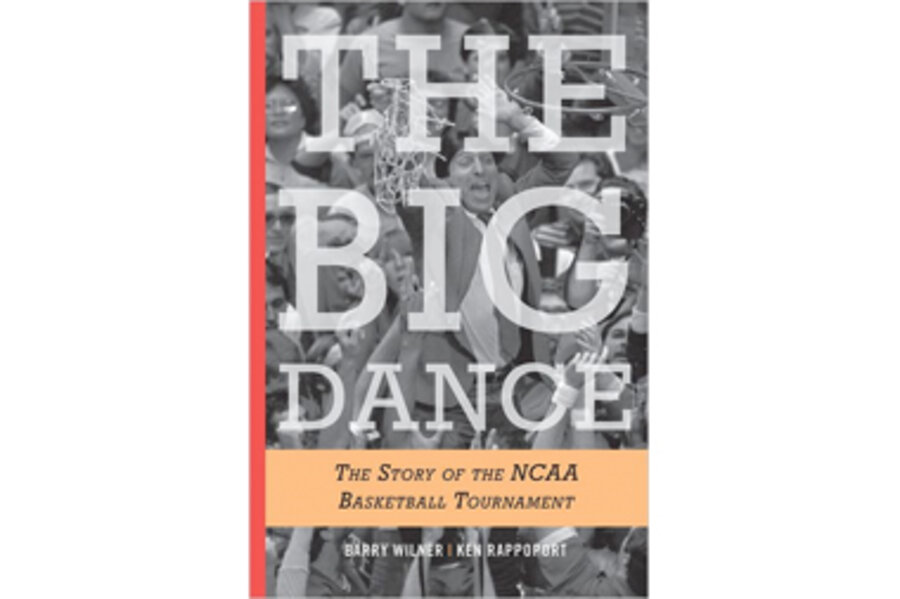The Big Dance
Loading...
What we now call March Madness began as an eight-team tournament in 1939 in a rickety Illinois gymnasium. The University of Oregon won a championship that had an audience of 5,500 and lost $2,531 – half the tickets were given away. By 1973, the first year the tournament was televised, 39 million viewers tuned in to watch UCLA pound Memphis State. Today, the tournament is a 68-team behemoth, with every match-up covered by four television networks. The NCAA collected a staggering $10.8 billion in its most recent broadcast deal; more than 95 percent of the NCAA’s revenue comes from March Madness contracts.
Barry Wilner and Ken Rappoport, longtime sportswriters, aim to tell how we got from there to here in The Big Dance: The Story of the NCAA Basketball Tournament. The authors draw from the wealth of sources cultivated over their courtside careers. Through excellent interviewing, they let the stars of tournaments past tell the story in the first-person. Among others, we hear from UCLA’s John Wooden, Tennessee’s Pat Summitt, UConn’s Geno Auriemma, Indiana’s Bobby Knight, and Cathy Rush, who had a 149-15 record coaching the Mighty Macs at Immaculata long before the NCAA got around to organizing a women’s championship in 1982.
The sportswriting background of Wilner and Rappoport is evident in the text’s short paragraphs, crisp sentences, and rhetorical questions, as well as their taste for quips. Game play is narrated in close-up detail, full of vibrant verbs and endearing anecdotes, as when we see the father of UCLA’s Lew Alcindor (later, Kareem Abdul-Jabbar) celebrate his son’s 1969 championship by leaving his bleacher seats to play first trombone with the school band. Wilner and Rappaport’s fan energy is the book’s driving force: they glow in the light of a game they love. Their eagerness to talk ball is contagious, and their detailing of game-by-game strategy is enlightening.
But "The Big Dance" takes a victor-centric approach, flat-lining the natural drama of the sport by beginning and ending each chapter – nay, each anecdote – with the winners. It reads like a hero’s march. And yet, nearly everyone who has ever participated in March Madness has lost. Disappointment, or the victory of making a brief appearance, is part of the texture of the tournament. These teams deserve more than a casual mention in a book purporting to be as broad as this one.
Even among winners, we are given narrow vantage. Naturally, there is a full chapter on John Wooden’s ten championships in 12 years at UCLA. But the chapters that follow loop us right back to UCLA in the Wooden years. The authors give us identical turns of phrase and anecdotes about Lew Alcindor and Bill Walton. A quote from Wooden is literally recycled: “Alcindor was the most valuable player I’ve ever coached,” Wooden tells us on both page 36 and 55. “Bill Walton is the second most valuable player, and you can put up a pretty good argument that he was as valuable as Alcindor.”
Interesting. But the repetition is numbing. Whether it is word-for-word or anecdotal, the circularity of the book is indicative of how the authors bowed out of the opportunity to tell a story, rather than a series of curiosities.
Most compelling is when Wilner and Rappaport look at the changing of the game. They dedicate a chapter to the rise of television contracts, and another to the 1966 championship that was the first with a contending team starting five black players. The authors also look at the implications of students skipping college for the NBA, a story dating to Spencer Haywood’s 1971 Supreme Court lawsuit, which found in favor of the Detroit player and overruled play-for-pay leagues’ ban on underclassmen going pro.
But such provocative stories are undercut by another reporter’s tic: talking about one thing at a time. Setting the “big picture” chapters apart from the game-by-game narration limits the authors’ ability to explore consequences. Likewise, the courtside story is broken into parts. There is a chapter on North Carolina’s basketball dominance in the 1950s, for example, and another on “the coaching giants” which is in turn pieced into vignettes profiling, say, Kentucky’s Adolph Rupp and Indiana’s Knight. This gives the book the taste of an anthology: more compilation than comprehensive.
"The Big Dance" two-steps around the big picture and satisfies itself with winning anecdotes. The chapters feel like they could’ve been placed in any order at all.
Altogether, reading this book is like listening to an affable drunk who lived an extraordinary life ramble at the neighborhood pub: at once, charming and frustrating.
Anna Clark is a freelance writer in Detroit.








